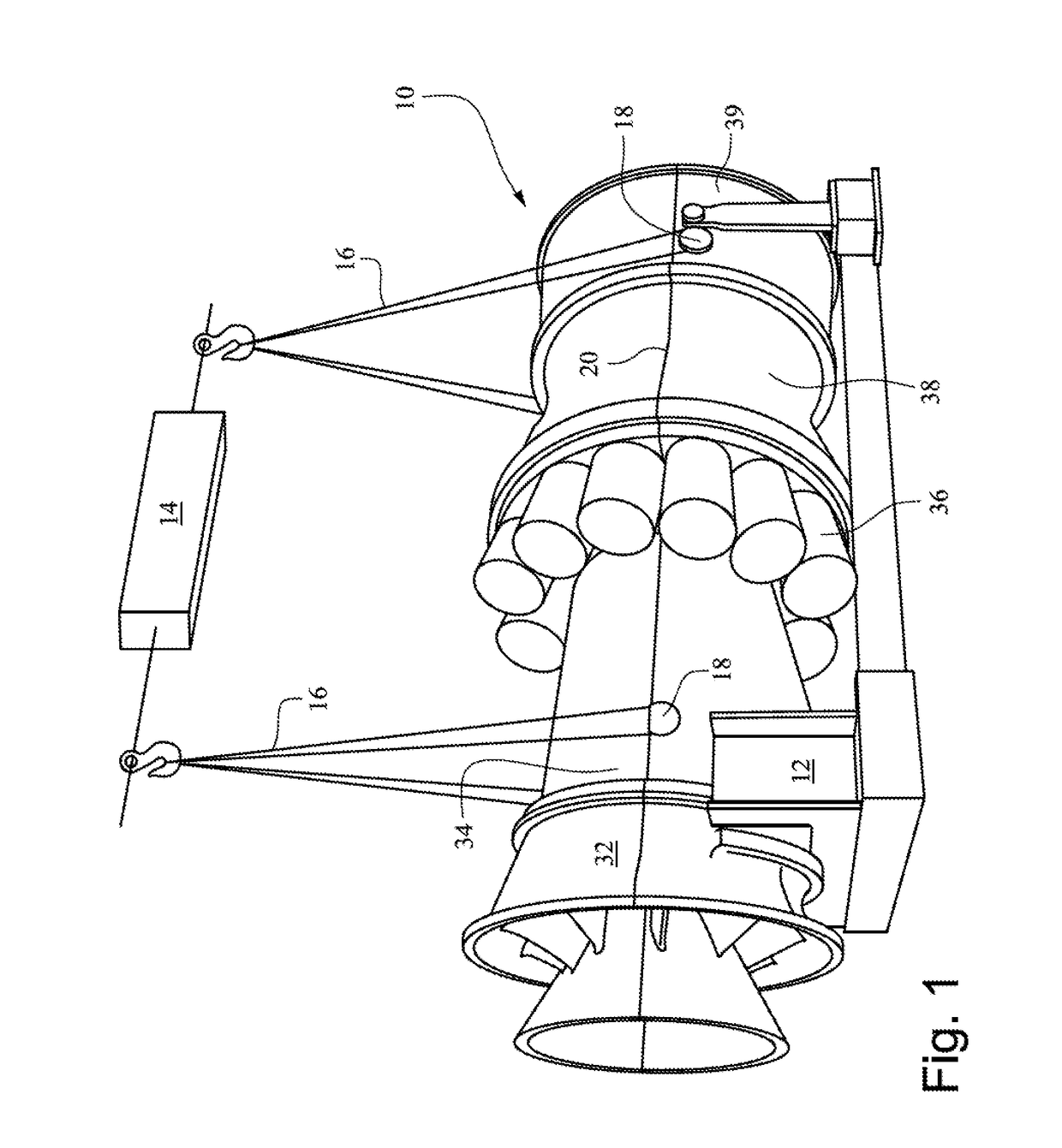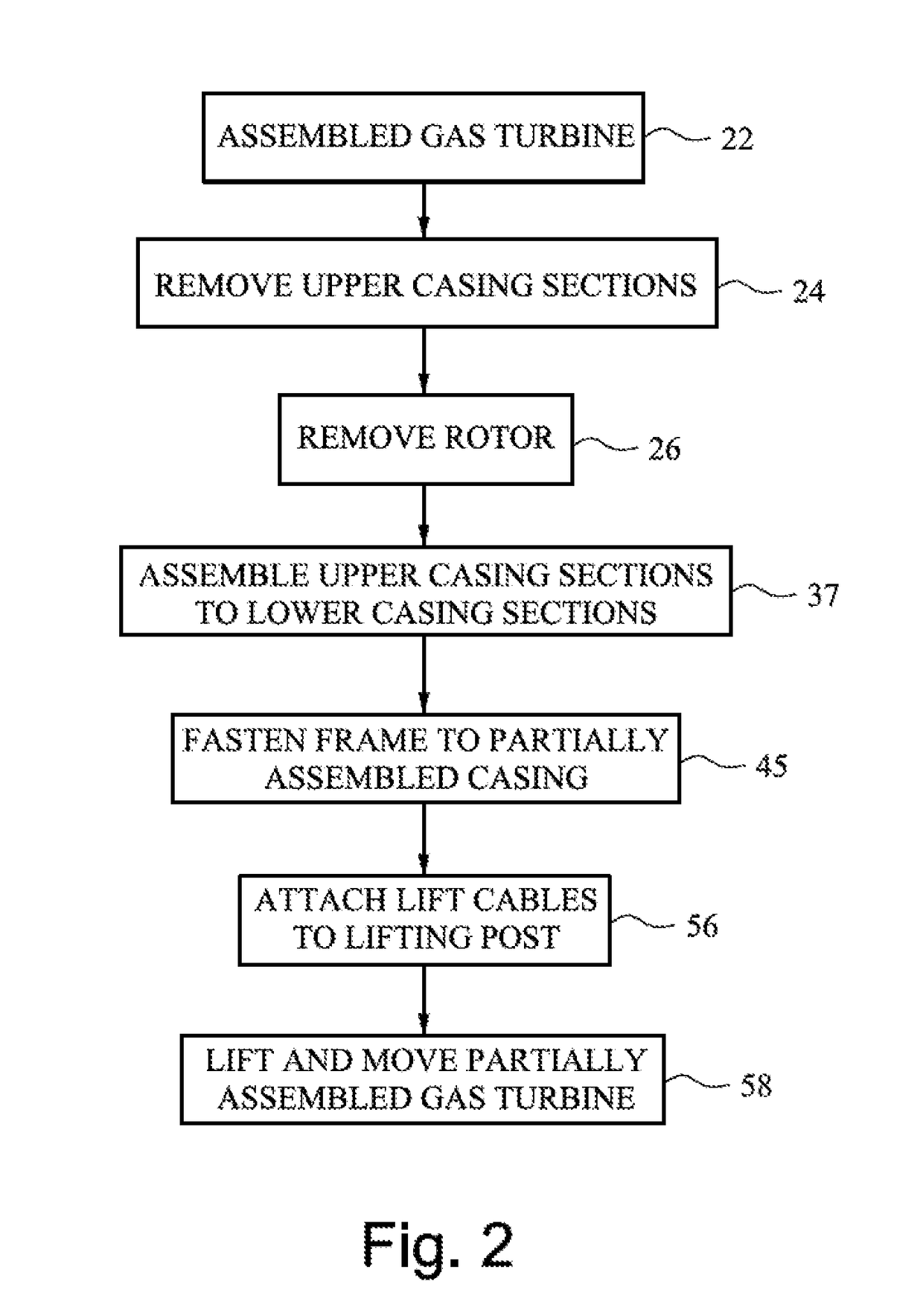Lift device for turbine casing and method to lift the casing
- Summary
- Abstract
- Description
- Claims
- Application Information
AI Technical Summary
Benefits of technology
Problems solved by technology
Method used
Image
Examples
Embodiment Construction
[0015]Industrial gas turbines are large and heavy engines. An industrial gas turbine may have a mass of, for example, in a range of 100 to 300 tons (90,000 kg to 272,000 kg). The dimensions of an industrial gas turbine may be, for example, a length of 30 to 50 feet (9 to 15 meters), and height and width of 12 to 20 feet (3.5 to 6 m).
[0016]Occasions arise when it is necessary to lift and move an industrial gas turbine. If rebuilding or other substantial maintenance is needed, the gas turbine may be lifted out of its operating support frame to another support frame where the gas turbine may be rebuilt or which may be used to transport the gas turbine to a maintenance facility.
[0017]At power generation sites not suited for heavy lift cranes or lacking roads or other infrastructure sufficient to carry a fully assembled gas turbine, it has been common practice to disassemble a gas turbine while the turbine seated in its operating support frame. The sequence of disassembly includes detach...
PUM
 Login to View More
Login to View More Abstract
Description
Claims
Application Information
 Login to View More
Login to View More - R&D
- Intellectual Property
- Life Sciences
- Materials
- Tech Scout
- Unparalleled Data Quality
- Higher Quality Content
- 60% Fewer Hallucinations
Browse by: Latest US Patents, China's latest patents, Technical Efficacy Thesaurus, Application Domain, Technology Topic, Popular Technical Reports.
© 2025 PatSnap. All rights reserved.Legal|Privacy policy|Modern Slavery Act Transparency Statement|Sitemap|About US| Contact US: help@patsnap.com



